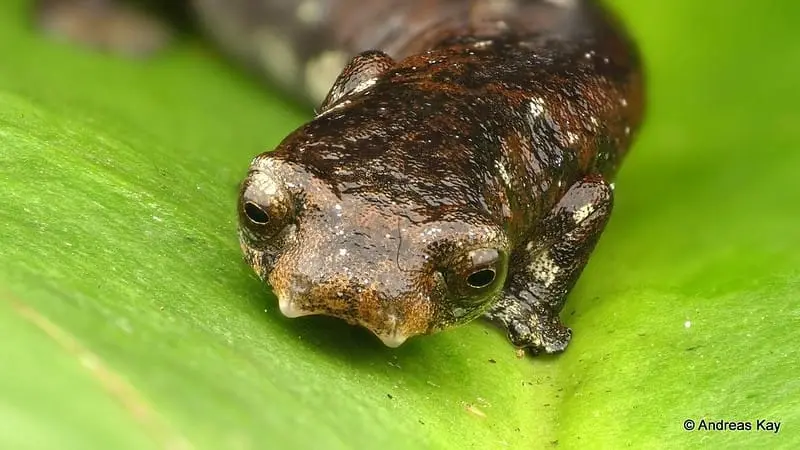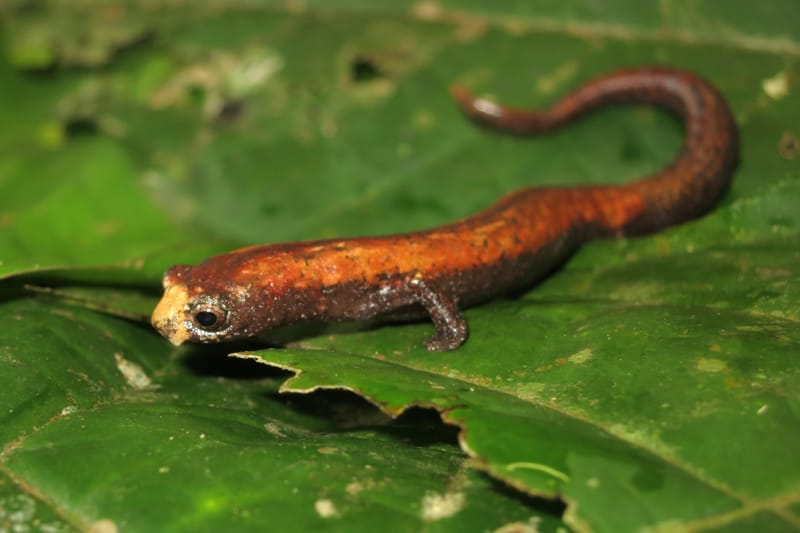Brazilian salamanders
Salamanders are some of the oldest creatures on earth. Their oldest fossils were found in China and Mongolia and date back 165 million years. About 450 species have been discovered, ranging in size from 3 cm (with tail) to 1.5 m (5 ft) and 65 kg (143 lb) — as in the case of the giant salamander.
Salamanders are amphibians typically characterized by a lizard-like body. However, their skin does not have scales and, like that of many other amphibians, is soft, thin, and permeable. An important factor in their respiration is the glands that their skin produces to keep it moist, acting as a respiratory membrane and for thermoregulation.
The viscous layer on their skin also protects them from fungal and bacterial infections, makes them slippery and more difficult to catch, reduces friction when swimming, and produces secretions that are repellent or toxic to their predators-usually birds, turtles, fish, and other amphibians. The skin can be monotonous or brightly colored, with various patterns of stripes, dots, or spots.
Salamanders are opportunistic hunters, usually not limited to one type of food, and will eat almost any animal that fits in their mouth. Terrestrials have a sticky tongue nearly the length of their bodies and capture prey by stretching it out in a fraction of a second, just like frogs and chameleons.

However, unlike frogs, most salamanders, including their young in the larval stage, have small teeth. Salamander larvae (tadpoles) usually have three pairs of external gills, a laterally flattened tail, dorsal and ventral fins, and a long body. However, most lungless salamanders, such as those found in Brazil, are born as smaller versions of adults, not passing through the tadpole stage.
Most salamanders inhabit North America, Europe, and Asia, and only one family — the Plethodontidae — can be found in South America. Belonging to this family are the Neotropical salamanders of the genus Bolitoglossa, which constitute about one fifth of all known species, but only five species inhabit Brazil.
The salamanders found in Brazil can be 6 to 12 cm (2 to 5 inches) long and, like all members of their family, have no lungs. They breathe through their skin and tissues attached to their mouths because their skin acts as a lung, and their nostrils are not used for breathing but only for detecting odors.
As a result, salamanders face the challenge of removing water and debris from their nasal passages, which can significantly impair their sense of smell. For this reason, they have a vertical fissure between the nostril and the upper lip, known as the nasolabial sulcus, which helps to drain the nose.

Three of these five endemic species were only discovered in 2013. So far, it has not been possible to estimate the size of the area in which the populations of these species are distributed, in order to know if they are threatened with extinction. Only B. paraensis is included in the list of threatened species in the state of Pará.
Although the status of the other species is unknown, many show a significant decline in their numbers since the late 20th century. Deforestation, pollution, disease, and climate change are the main causes of this decline. Various conservation initiatives are underway around the world, including artificial insemination of salamanders and environmental education and awareness.
Salamanders are the only vertebrates capable of regenerating complex tissues and organs, such as lost limbs or other damaged body parts, and each family has its own unique mode of regeneration. Researchers in the field intend to reverse-engineer their amazing regenerative processes to develop human medical applications, such as treating spinal cord and brain injuries or preventing scarring.
Read more:
The Local Distribution and Ecology of the Plethodontid Salamanders of the Southern Appalachians
Missing Parts? Salamander Regeneration Secret Revealed
The Function of the Naso-Labial Groove of Plethodontid Salamanders
